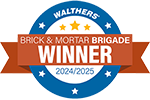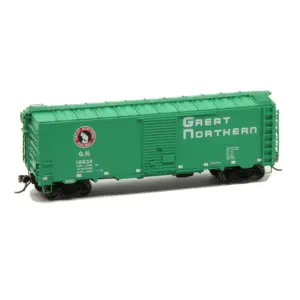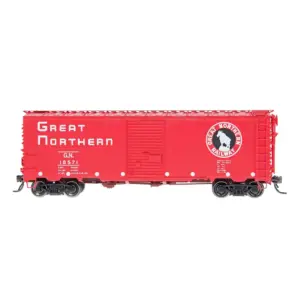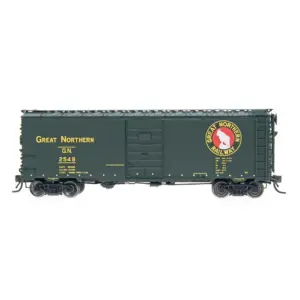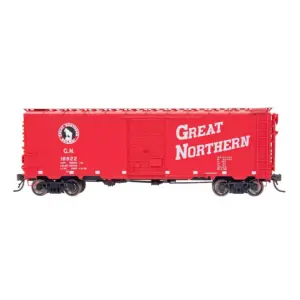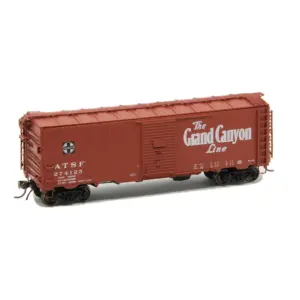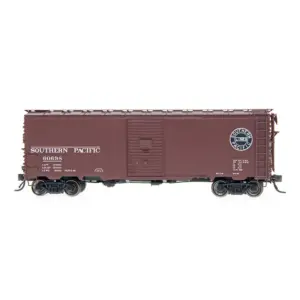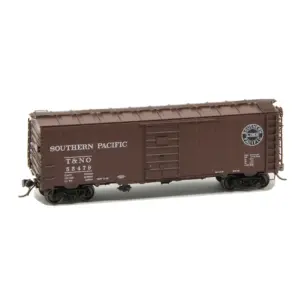40' 12 Panel Box Car
Prototype Information
A “40′ 12-panel boxcar” represents a standard 40-foot-long railroad boxcar, notable for its 12 vertical panels on each side. These boxcars were built primarily in the mid-20th century, during a time when railroads were transitioning to more modern designs. They combined functional versatility with specific design features, making them a common sight on North American railroads for transporting a wide range of freight.
Key Features of 40′ 12-Panel Boxcars:
Side Panels: The 12 vertical panels on each side gave these boxcars a distinctive appearance, helping to differentiate them from other boxcar designs of the era.
Length: The 40-foot length became the standard size for boxcars during the mid-20th century, providing an optimal balance of capacity and compatibility with existing infrastructure.
End Design: Most 12-panel boxcars featured Improved Dreadnaught ends, a popular style characterized by its ribbed contour. These ends provided enhanced strength and durability, accommodating the heavier loads typical of post-war freight demands.
Roof Design: The diagonal panel roof was a hallmark of these boxcars, with angled panels designed to shed water effectively while maintaining structural integrity.
The 40′ 12-panel boxcar was widely adopted due to its capacity and adaptability. Its design allowed for efficient transportation of various goods, including agricultural products, industrial materials, and manufactured items. These cars were a staple of mid-20th-century freight operations, reflecting the evolving needs and technological advancements of the rail industry.
Showing all 9 results
-
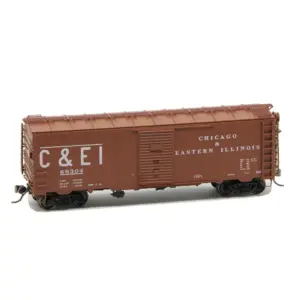
Intermountain HO 40′ 12 Panel Box Car Chicago & Eastern Illinois
$38.00 Select options This product has multiple variants. The options may be chosen on the product page -

Intermountain HO 40′ 12 Panel Box Car Denver & Rio Grande “Maintenance of Way”
$23.00 Select options This product has multiple variants. The options may be chosen on the product page -

Intermountain HO 40′ 12 Panel Box Car Great Northern “Empire Builder, Glacier Green”
$38.00 Select options This product has multiple variants. The options may be chosen on the product page -

Intermountain HO 40′ 12 Panel Box Car Great Northern “Empire Builder, Vermillion Red”
$38.00 Select options This product has multiple variants. The options may be chosen on the product page -

Intermountain HO 40′ 12 Panel Box Car Great Northern “Express, Pullman Green”
$38.00 Select options This product has multiple variants. The options may be chosen on the product page -

Intermountain HO 40′ 12 Panel Box Car Great Northern “Vermillion Red”
$38.00 Select options This product has multiple variants. The options may be chosen on the product page -

Intermountain HO 40′ 12 Panel Box Car Santa Fe “Grand Canyon Line”
$38.00 Select options This product has multiple variants. The options may be chosen on the product page -

Intermountain HO 40′ 12 Panel Box Car Southern Pacific
$38.00 Select options This product has multiple variants. The options may be chosen on the product page -

Intermountain HO 40′ 12 Panel Box Car Texas & New Orleans
$38.00 Select options This product has multiple variants. The options may be chosen on the product page

